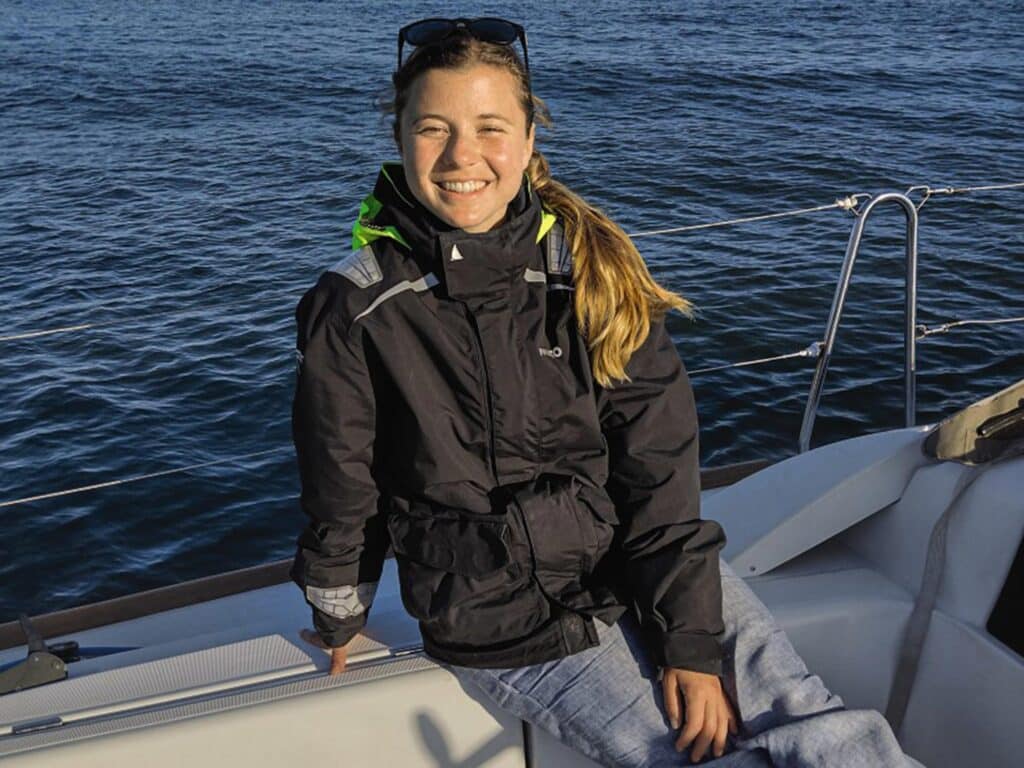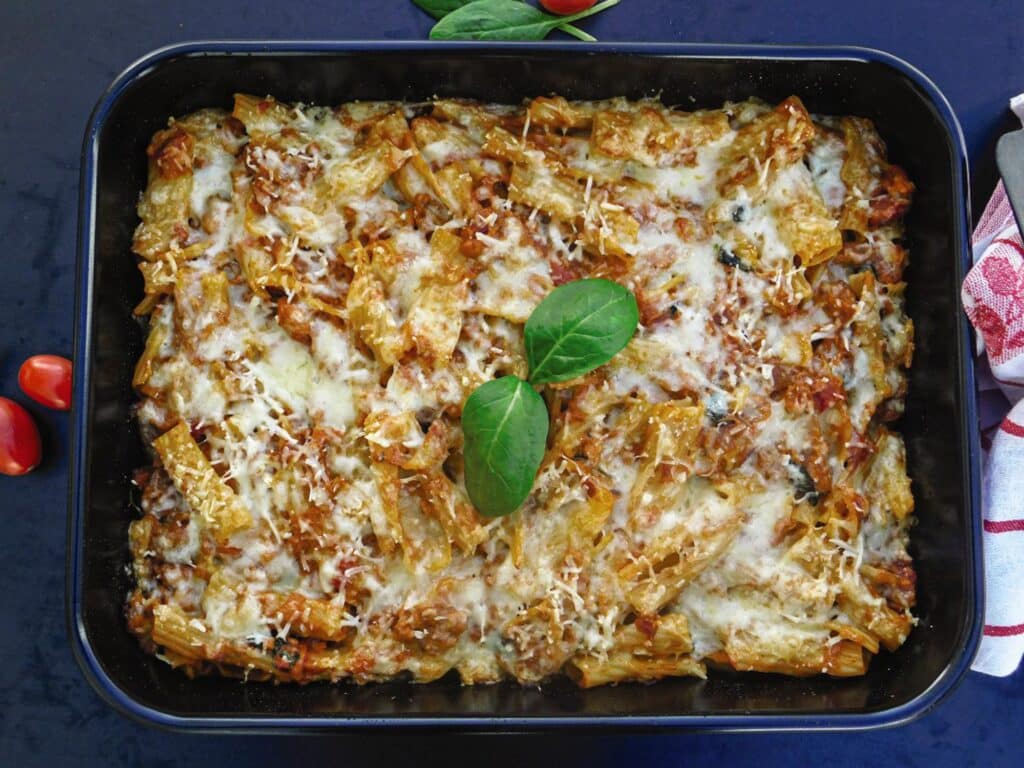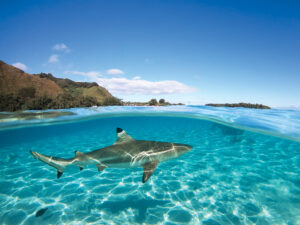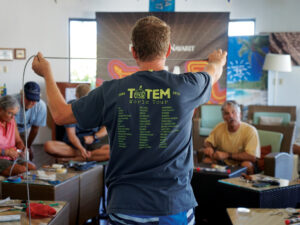
Had I not fallen in love with a sailor from the other side of the world, I could’ve happily stayed in Mexico aboard Circe, my family’s Catalina 400, for the rest of my life.
Starting from a young age, I’d spent my life sailing the California coast with my family aboard Tango, our Catalina 30. Later, on the larger Circe, we spent every spring cruising the Sea of Cortez, smitten by the region’s warm water, stunning wildlife and pristine anchorages. I never grew tired of sailing, exploring, snorkeling, spearfishing and enjoying delicious meals aboard. (I was a family cook.)
Then, I met Tristan, a Welshman who shared my love of boats and the sea. He joined us aboard Circe for a few seasons, exploring Mexico before we married. We moved from the warm, familiar shores of Mexico to a rainy isle called Great Britain, my husband’s homeland.
We settled in Pembrokeshire, Wales, a county on the country’s western tip known for the breathtaking national park that spans its coast. The area is a step back in time; people either love or hate the slow pace of life. Those who love it have one thing in common: a lifestyle that revolves around the sea. We fit right in.
Not long after arrival, I set sail on a weeklong Royal Yachting Association Day Skipper course. What better way to get to know my new sailing ground? Two other student crew and I boarded our 40-footer, met our professional skipper, and got settled. We sailed from Milford Haven, a tidal estuary that divides Pembrokeshire County in half from north to south. The week’s plan was to allow the tides and weather to dictate our daily passages. By the end of the week, we’d be able to confidently day-skipper our own boats.
Britain’s cruising grounds differ from California’s and Mexico’s in a few noteworthy ways. The tidal range in Pembrokeshire is more than twice that of San Francisco Bay. The weather is famously fickle. Navigation takes some getting used to. (The red-green buoys are reversed from what boaters know in the United States. Here, it’s green, right, returning.) And, unlike the Sea of Cortez, the water is cold. Snorkeling off a boat requires 4 millimeters of neoprene, followed by hot cups of tea to thaw frozen fingers.
When I boarded the boat that gray Friday evening for the start of my course, I knew to expect these differences. In fact, what surprised me most wasn’t the dismal weather or nautical nuances, but the discovery of something Britain is most certainly not known for: delicious food.
My fellow crewmembers and I took turns cooking the evening meals. Most of the dishes on rotation were familiar comfort foods such as curry, chili and spaghetti Bolognese, which the Brits affectionately call “spag bol.” When it was my turn to cook, I was handed a bag of pasta, some canned tomatoes and a few cans of tuna. My instructions: “Make a tuna pasta bake.”
Truth: I’d never even heard of a tuna casserole, never mind a tuna pasta bake. I suspected that the crew had invented it just to use up our remaining provisions, but they were adamant that it was a British classic.
As I stood in the galley, eyeing up my ingredients and forming a plan, the crew could sense my apprehension. One by one, they began popping their heads into the companionway to offer advice.
“My mum always added sweet corn,” one said.
“I bake mine until the top is a little crispy,” another chimed in.
“I’d add that third tin of tuna,” yet another offered.
I listened to some of their suggestions (the crispy top) and respectfully ignored some (the sweet corn). The result was a tuna pasta bake that I’m proud to say won the British crew’s stamp of approval. It was everything a cold-water boat meal should be: simple, hearty, and the perfect excuse to turn on the oven and warm up the cabin.
British-Style Tuna Bake (serves 6)

- 1 lb. rigatoni or penne pasta
- 3-4 Tbsp. olive oil
- 2 small or medium onions, chopped
- Salt and pepper to taste
- 3 cloves garlic, minced
- 8 Tbsp. tomato paste
- 3/4 cup red wine
- 1 12-ounce can diced tomatoes
- 2 tsp. sugar
- Pinch of oregano and basil
- 3 cans tuna in oil (3.5- to 5-ounce cans, drained)
- 1 generous cup fresh baby spinach leaves or kale, chopped
- 1 cup mozzarella, grated
- 1 generous cup cheddar, grated
- Dusting of Parmesan, grated
Preheat the oven to 400 degrees Fahrenheit.
Boil pasta in a large pot of generously salted water, until one stage before al dente. (Use package directions as a guide.) Drain, but reserve about 1½ cups of the pasta water. Set pasta aside.
Heat olive oil in the pasta pot. Sauté onions with a pinch of salt and pepper until they soften. Add garlic and cook for another 2 minutes. Add tomato paste and blend, stirring, for another minute. Stir in the wine, and allow sauce to simmer for 2 to 3 minutes.
Stir in tomatoes, sugar, herbs and tuna. Simmer for 10 minutes. Add baby spinach or kale and cook briefly, until wilted.
Remove from heat. Thin the sauce with a bit of pasta water, then gradually add cooked pasta and mozzarella, stirring gently and adding more pasta water as needed to keep the mixture moist. Transfer to a greased 9-by-13-inch baking pan or casserole dish. Top with cheddar and Parmesan.
Bake until cheese is melted and bubbling, and the edges of the bake are slightly crispy. Serve warm.
Prep time: 30 minutes (including cook time)
Difficulty: Easy
Can be made: At anchor
Do you have a favorite boat recipe? Send it to us for possible inclusion in Sailor & Galley. Tell us why it’s a favorite, and add a short description of your boat and where you cruise. Send it, along with high-resolution digital photos of you aboard your boat, to sailorandgalley@cruisingworld.com.








